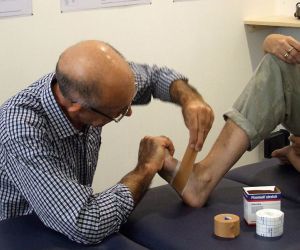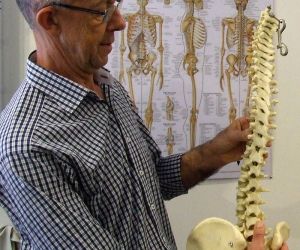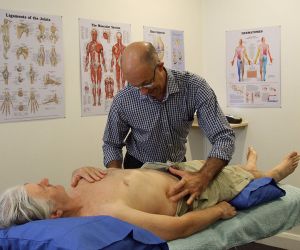Technique, modifications - often too much flexibility and not enough strength. Let Peter see what is causing the problem and find ways to improve or modify technique. Specific strengthening or stretching may be required.
Peter sees a full range of sports injuries. There can be underlying muscle weakness or imbalance. He will look closely at sports methods and movements. Peter aims to find the cause of the injury then use a combination of strapping, stretching, strengthening and sports technique modification to address the issue that has arisen.
The best approach is an assessment of repetitive tasks/postures and consideration of possible workplace modification. Treatment requires release of tight joints and muscles, strengthening exercises and pause exercises. You may need to strengthen other body parts to help take the load off the painful body part and/or alter your work method.
Core strength relates to the muscles of the abdomen and pelvic floor. Core strength is essential to maintaining stability in the lumbar spine. Core strength is often lost after injury or periods of lower back pain. In cases where manual therapy to joints and muscles does not give lasting relief, the problem can be intervertebral instability. In this situation spinal joints become too loose, move too far and stress ligaments and small muscles around the spine. Pain is the result. Improved core stability can be achieved by learning specific abdominal exercises that you can do at home as floor exercises and/or fit ball exercises with graded resistance and difficulty.
Stability and anatomical positioning is also important for the shoulder girdle. If the shoulder blades are positioned poorly on the rib cage, the biomechanics of the shoulder joints is adversely affected. Building stability and good positioning of the shoulder blades can be an effective treatment strategy for chronic shoulder problems.
Conditions treated
- Core stability
- Hips, knees, ankles and feet
- Lower back pain
- Management of acute injuries
- Neck pain and Headache
- Neurological pain in arms and legs
- Overuse injuries
- Pelvic Asymmetry
- Physical Rehabilitation
- Problems associated with cycling
- Problems associated with yoga
- Shoulder, elbow, wrist, hand, and fingers
- Sports injuries
- Vehicle seating - adjustment and adding support
- Work injuries



